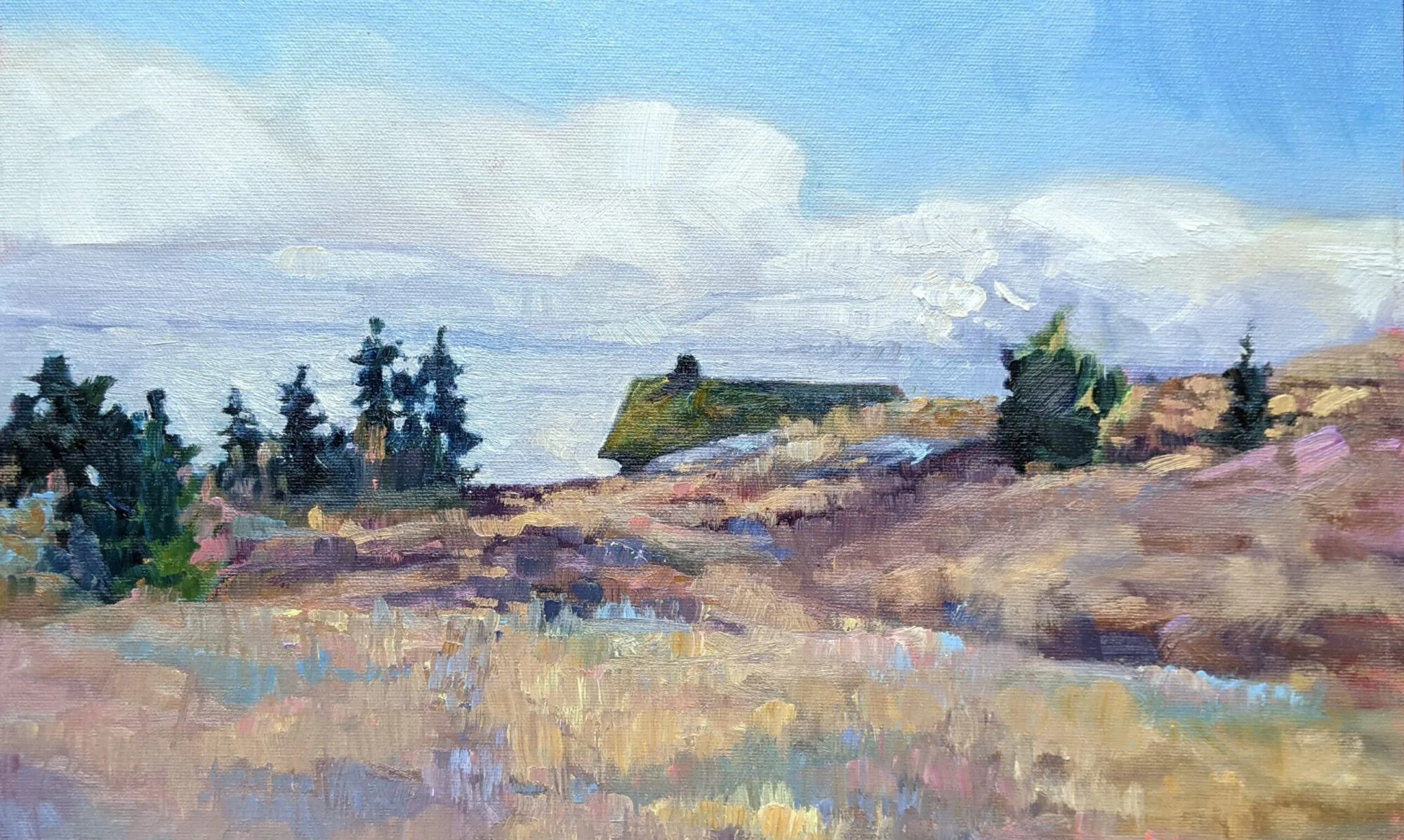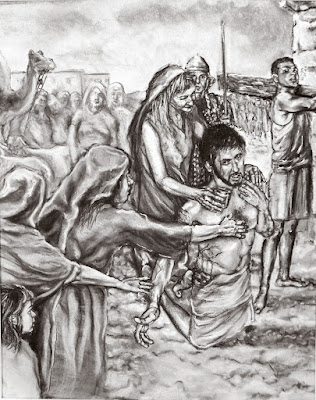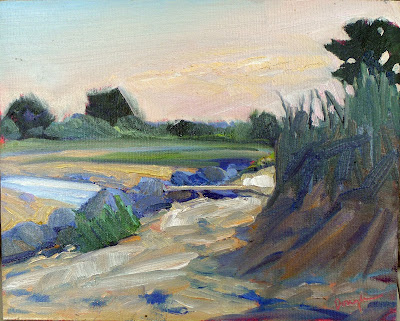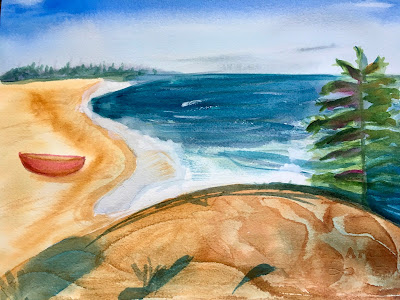How could I have even taken a photo this bad, let alone make a painting out of it?
 |
| Early November: North Greenland, 1932, Rockwell Kent, courtesy the Hermitage. |
The focal points of a painting are not necessarily the subject. In Rockwell Kent’s Early November: North Greenland, above, our eyes go first to the iceberg in the foreground. Kent has made it the most luminous, warmest part of the scene, and set it off against the briny depths. Next, we look at the hillside behind, which is almost as bright as the iceberg. Only after that does our eye travel to the human activity at the bottom. Here we’re arrested by an ageless story: man wrestling against the vast power of nature for his very survival. We spend a long time looking at these tiny fishermen, which we wouldn’t have done had they been what we noticed first.
Kent has borrowed a technique beloved of Pieter Bruegel the Elder four hundred years earlier. In his Census at Bethlehem, all the bustle and contrast of the midfield drive our eyes down to the least important part of the painting, the lower left corner. We nearly miss the Holy Family and their donkey, in the center bottom. Just as in the Bible story, the critical event happens in an unimportant place.
The painter must get used to thinking in terms of composition instead of subjects. Every representational painting has (we hope) a subject, but if we just drop that subject in the center of the canvas, there will be no drama or order to the painting.
Why did we read Rockwell Kent’s painting in that order? Because the light and dark masses drove our eyes inexorably through the painting in a planned way.
Often the beginning painter is fixated on the details, but it’s the value masses that will ultimately carry the painting. Start by figuring out a way to stop seeing detail. I’m slightly nearsighted; I take off my glasses and detail dissolves. Those of you blessed with better eyesight have to squint. But if you do so, you’ll realize that you can easily fool the brain into seeing big shapes rather than detail. Minor differences in values disappear.
| A really bad photo of a cypress swamp near Marion, Alabama, taken by yours truly. |
It’s a little more difficult when working with reference photos, where the detail is always there, teasing you. Above, I’ve posted a snapshot I took in a swamp in Alabama. In terms of subject matter, it interests me; I’m from the north where we don’t have trees with knees. In terms of composition, it’s awful. How could I have even taken a photo this bad, let alone make a painting out of it?
I have to address three questions:
- Where does the visual strength in these cypress knees lie? There’s power in almost any image, although you sometimes have to dig for it.
- How can the picture plane be broken into light and dark passages?
- How will I crop my picture to strengthen the composition?
 |
| Shapes that I can base a painting on. |
 |
| Looking at this on the computer, I really wish I hadn’t chosen the crop I did. I’m blaming the lack of coffee and the dog, who’s begging for a walk. |
 |
| Give me back that breathing space! (And sorry about the terrible photography.) |
It’s Easter Monday, or Dyngus Day, as we observe in Buffalo, NY. The dog is pestering me, and I have things to do and places to go. But for now, I have a pattern of lights and darks upon which I can hang a painting.



































